As one of the most important and unique ceremonies conducted during the new year festival of Chol Chnam Thmay of the Khmer people in southern Vietnam, the ceremony of bathing the Buddha represents the belief of the Khmer people in Buddhism and their desire for peace in the new year.
The ceremony starts with three drum rolls to remind people of preparing for all necessary things and a rite to place the Buddha statues in the spacious yard in the pagodas. Khmer people, carrying vases or pots containing scented water (flowers and a kind of fragrant oil are added to the water), gather at the pagodas to participate in bathing the Buddha statues.
First, the managing board of each pagoda leads the procession of people to parade three times around the sanctum to welcome the New Year. Then, they chant and carry out a ceremony to pray for peace and a requiem inside the sanctum before gathering around the Buddha statues. The head of the pagoda conducts the ritual of bathing the Buddha with scented water first, followed by bhikkhus and sramaneras and the locals respectively. If the statues are too big, people can bathe part of them to symbolise the bathing.
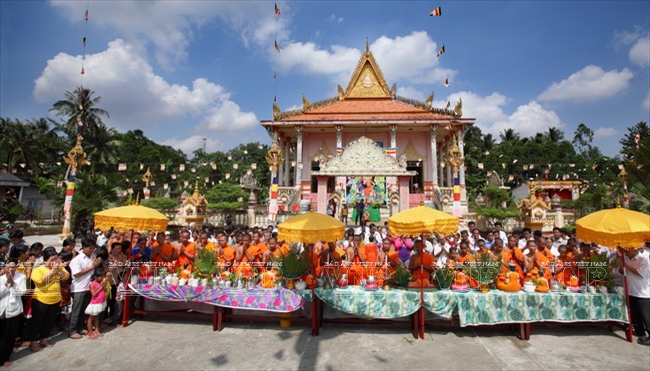
Preparation for the rite of bathing the Buddha at new Xoai Xiem Pagoda (Tra Cu District, Tra Vinh Province).
Photo: Nguyen Luan/VNP
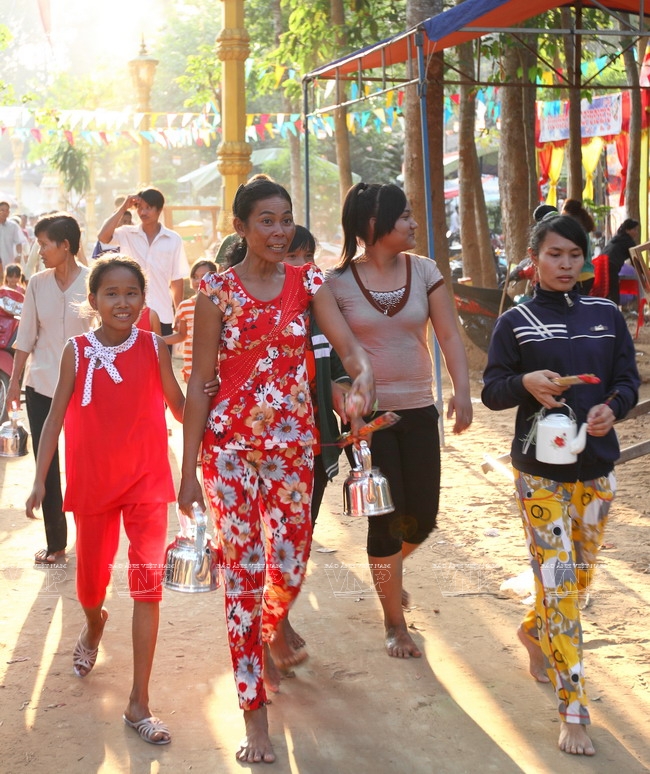
Khmer people with pots of scented water on hands go to the pagoda to conduct the ritual. Photo: Nguyen Luan/VNP
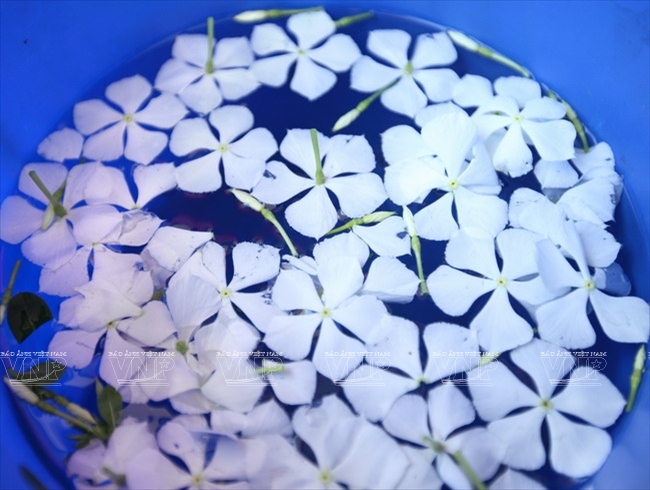
Scented water (flowers and a kind of fragrant oil are added to the water) is used during
the ceremony of bathing the Buddha. Photo: Nguyen Luan/VNP
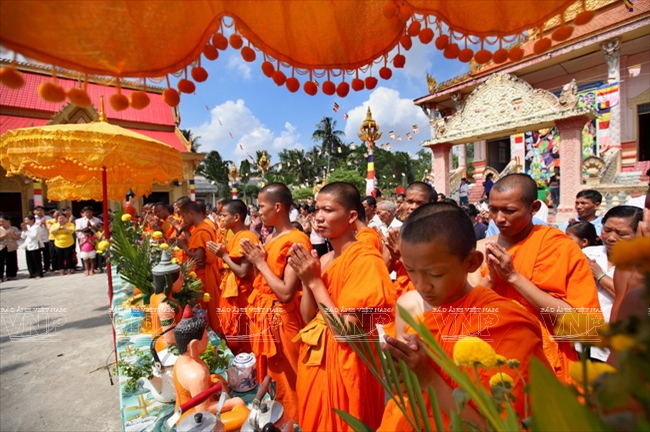
Monks conduct the rite of bathing the Buddha at new Xoai Xiem Pagoda (Tra Cu District, Tra Vinh).
Photo: Nguyen Luan/VNP
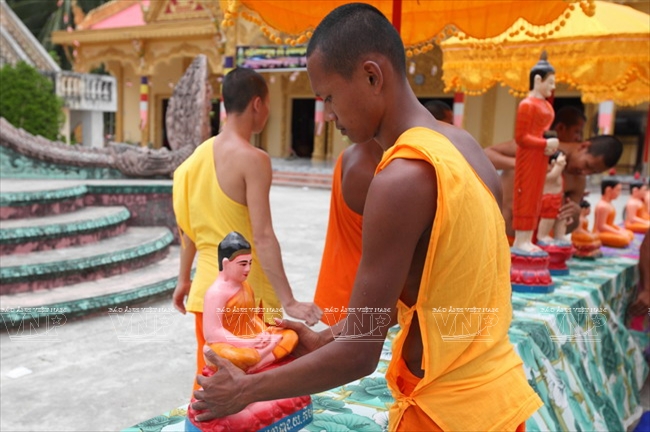
Statues of Buddhas are placed in a spacious yard to prepare for the rite of bathing the Buddha.
Photo: Nguyen Luan/VNP
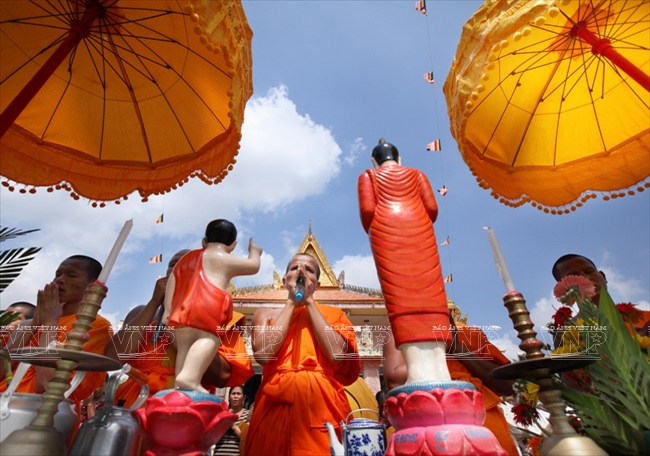
The ceremony of bathing the Buddha is solemnly held. Photo: Nguyen Luan/VNP
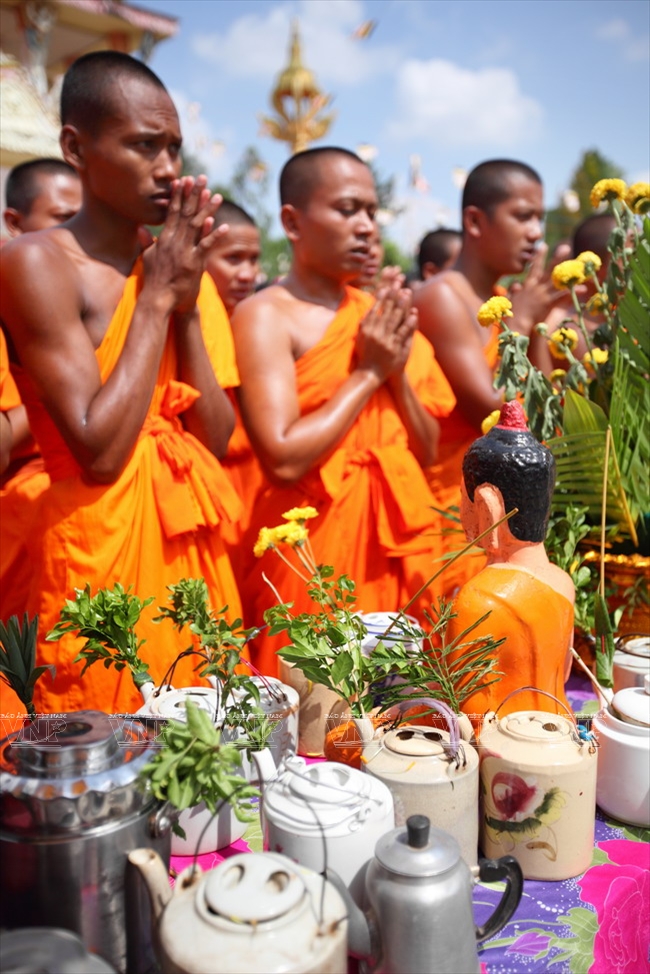
Pots of ccented water are used to bathe the statues. Photo: Nguyen Luan/VNP
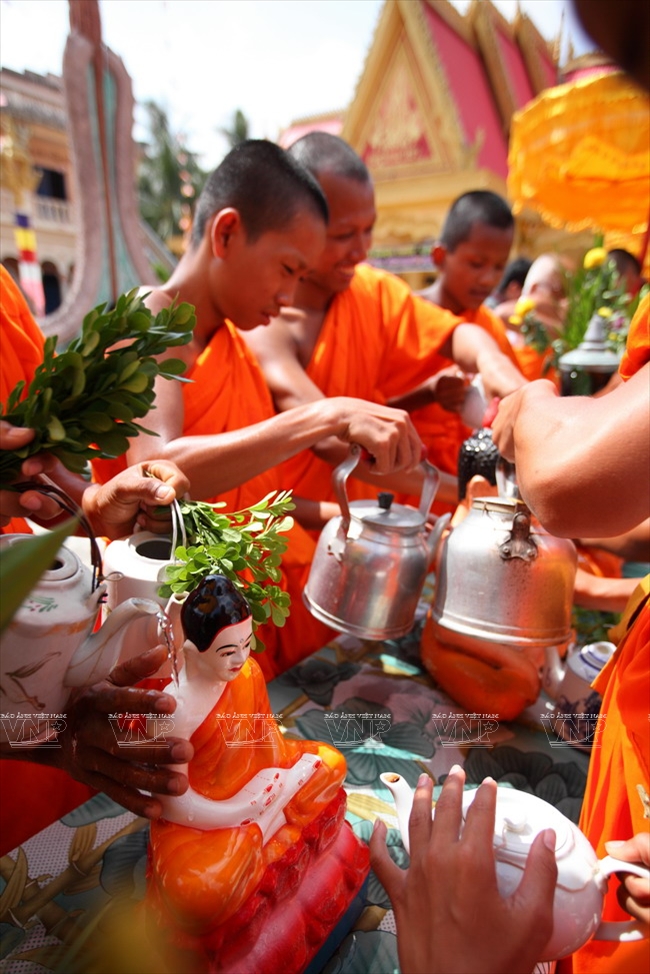
The monks conduct the rite of bathing the Buddha first and then the Buddhist followers do it.
Photo: Nguyen Luan/VNP

People use scented water to bathe the Buddha statues. Photo: Nguyen Luan/VNP
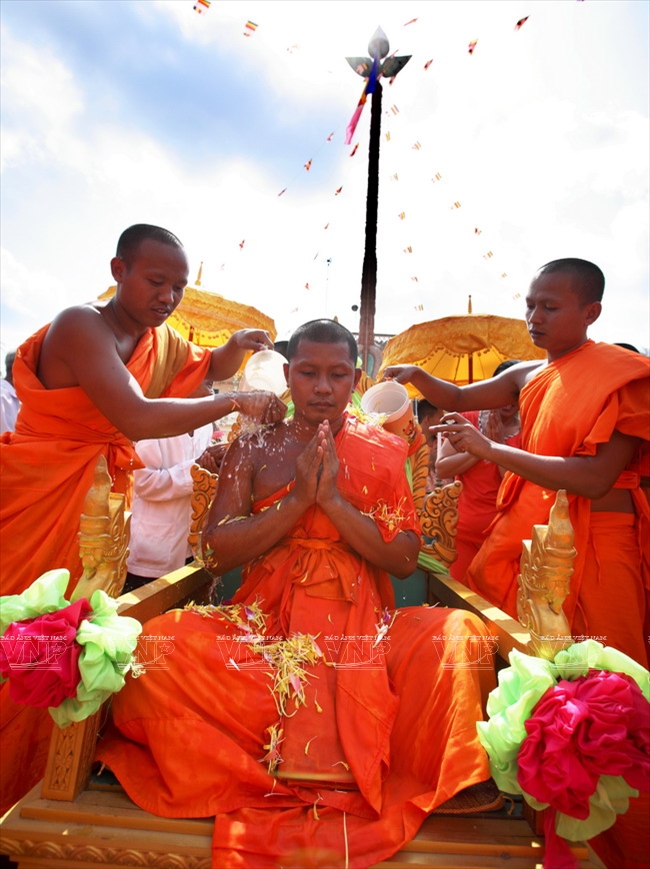
After bathing the statues, monks conduct the ritual of bathing or washing the arms or legs of the head of the pagoda.
Photo: Nguyen Luan/VNP
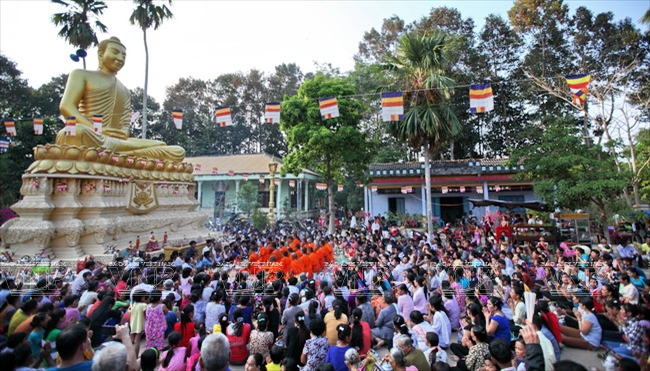
People listening to the head of the pagoda giving a sermon at Mich Pagoda (Tra Cu District, Tra Vinh Province)
after conducting the rite of bathing the Buddha. Photo: Nguyen Luan/VNP
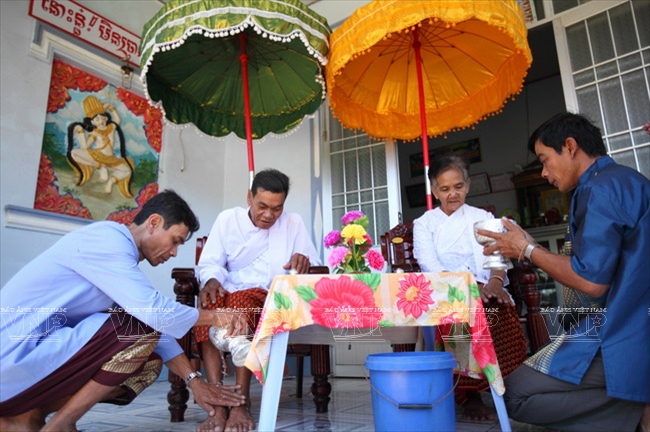
People use the left scented water to wash the arms and legs of their parents and grandparents.
Photo: Nguyen Luan/VNP
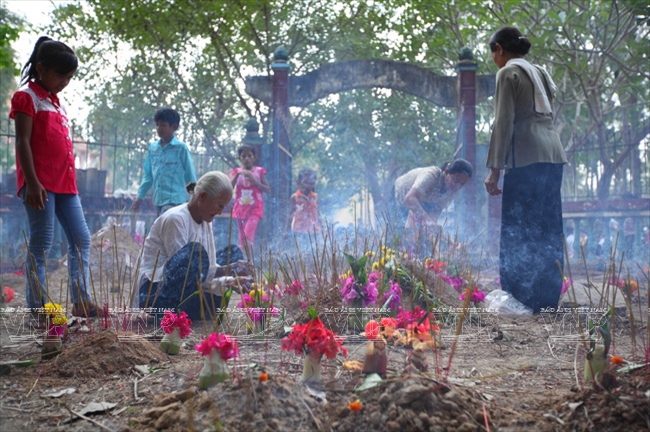
People offer incense on graves during the ceremony of bathing the Buddha. Photo: Nguyen Luan/VNP
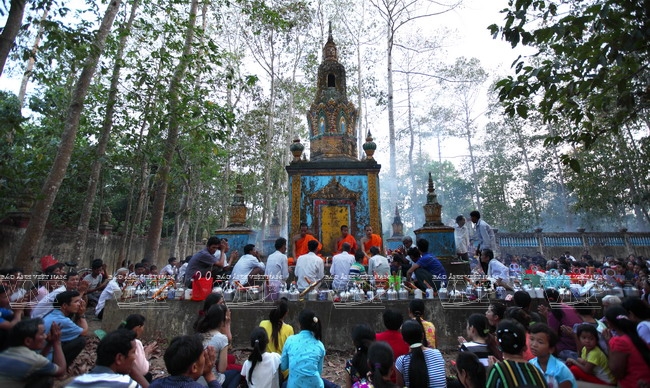
Families invite monks to chant and carry out a requiem to mass for the dead at the stupas which hold the ashes.
Photo: Nguyen Luan/VNP |
The ceremony also signifies the elimination of bad luck of the old year to welcome the New Year with a new and purified body. Twenty two year-old Thach Thi Tu Quyen, who participated in the ritual in Xoai Xiem Pagoda (Tra Cu District, Tra Vinh Province), shared that she often wished for the health of her parents and for peace and prosperity of the whole family.
After bathing the statues, monks conduct the ritual of bathing or washing the arms and legs of the head of the pagoda who preaches and teaches them the sutra. The rest of the scented water will be brought home by the Buddhist followers to conduct the same ritual for their grandparents and parents to express their gratitude for their giving birth and breastfeeding them.
Story: Son Nghia
Photos: Nguyen Luan
phamtrangnhung